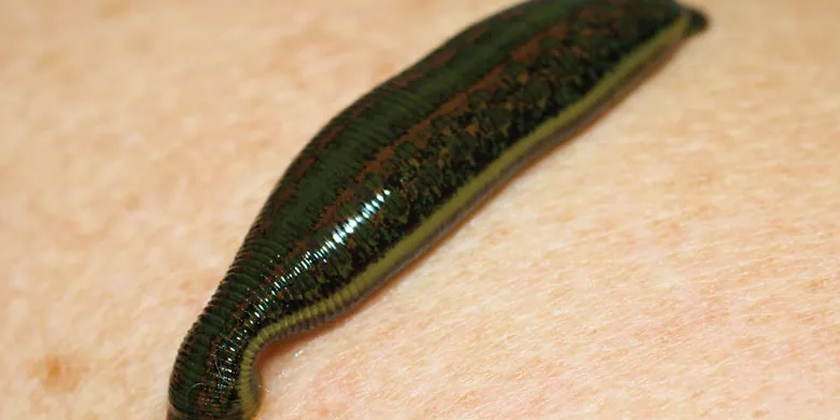Liver Repair with Leeches: A Revolutionary Path to Recovery
Leech therapy using Hirudo medicinalis is an alternative medical practice that aids in liver recovery by addressing complications like hematomas and venous congestion, rather than directly repairing liver tissue. This therapy is primarily supportive, reducing stress on the liver and promoting wound healing post-surgery or injury.
Why Leech Therapy Matters for Hepatic Recovery
Leech therapy is emerging as a solution for managing liver damage complications. A 2023 Cureus case study highlighted its effectiveness in resolving post-surgical hematomas, suggesting an indirect benefit to liver recovery through tissue stress reduction. While useful as an adjunct to standard treatments under specific conditions, its direct impact on liver tissue repair is limited.
How Leech Therapy Supports Liver Health
Mechanism of Action
Medicinal leeches release bioactive molecules that facilitate wound recovery and minimize complications:
- Anticoagulants: Hirudin, a potent anticoagulant, dissolves blood clots and assists in treating hematomas near the liver, as per research in J Dtsch Dermatol Ges (2010).
- Vasodilators: These compounds enhance blood flow, reducing venous congestion and protecting liver function from additional stress.
- Anti-Inflammatory Agents: They decrease swelling, supporting hepatic recovery after surgery.
- Analgesics: These agents minimize pain, improving patient comfort during recovery.
The 2010 J Dtsch Dermatol Ges publication reported an 87% improvement rate in 23 patients with hematomas or tissue congestion treated with leech therapy.
Applications in Liver-Related Contexts
Leech therapy is not a primary treatment for liver diseases like hepatitis or cirrhosis but offers support in specific situations:
- Post-Surgical Hematomas: It can resolve blood pooling around the liver after transplant surgeries (Cureus).
- Venous Congestion: It supports circulation during liver-related procedures, reducing complications.
- Wound Management: It promotes wound healing after abdominal operations, which indirectly benefits liver health.
Benefits of Leech Therapy for Liver Repair
When applied in designated cases, leech therapy offers potential advantages:
- Hematoma Resolution: Each leech can draw 5–10 mL of blood, relieving pressure that might compromise liver function (Frontiers, 2024).
- Improved Circulation: Enhances oxygen delivery, supporting hepatic recovery.
- Reduced Inflammation: Lowers swelling, minimizing stress on the liver.
- Non-Invasive Option: Complements post-surgical care when surgery is not feasible.
Risks and Limitations
The use of leech therapy for liver repair carries significant risks and constraints:
- Infection Risk: Leeches harbor Aeromonas bacteria, necessitating antibiotic treatment to prevent infections (Cureus).
- Prolonged Bleeding: Leech bite sites require constant monitoring as bleeding can persist for several hours.
- Limited Evidence: Research primarily consists of small case studies, with large-scale clinical trials on liver repair benefits remaining scarce, thus unconfirmed (Frontiers).
- Contraindications: Patients with bleeding disorders or severe liver disease require careful medical supervision before considering this treatment.
Due to the lack of direct evidence for liver tissue repair, leech therapy should be considered only a supplementary treatment.
FAQs About Leech Therapy for Liver Repair
- Can leech therapy directly repair liver tissue? Leech therapy primarily assists with wound healing and hematoma management, indirectly supporting liver health (Cureus).
- Is leech therapy safe for liver patients? It can be safe under medical supervision but poses risks for patients with bleeding disorders or advanced liver disease (Frontiers).
- How many leeches are typically used in a session? A standard session involves 2 to 6 leeches, depending on the size of the hematoma or wound, with 1 to 2 sessions typically required (J Dtsch Dermatol Ges).
- How does leech therapy aid in liver surgery recovery? Leech therapy helps by minimizing hematomas and improving blood flow, thereby supporting liver healing after surgery (Cureus).
Conclusion: A Revolutionary Approach to Liver Health
The use of medicinal leeches for liver repair is a limited but promising method for managing complications like post-surgical hematomas and venous congestion. While not a cure for liver disease, research from Cureus and Frontiers suggests its potential to promote wound healing and hepatic recovery in specific cases. Given the associated risks, medical supervision is essential. Consult a specialist to determine if this alternative treatment aligns with your recovery needs.



